
How to Use mq6: Examples, Pinouts, and Specs
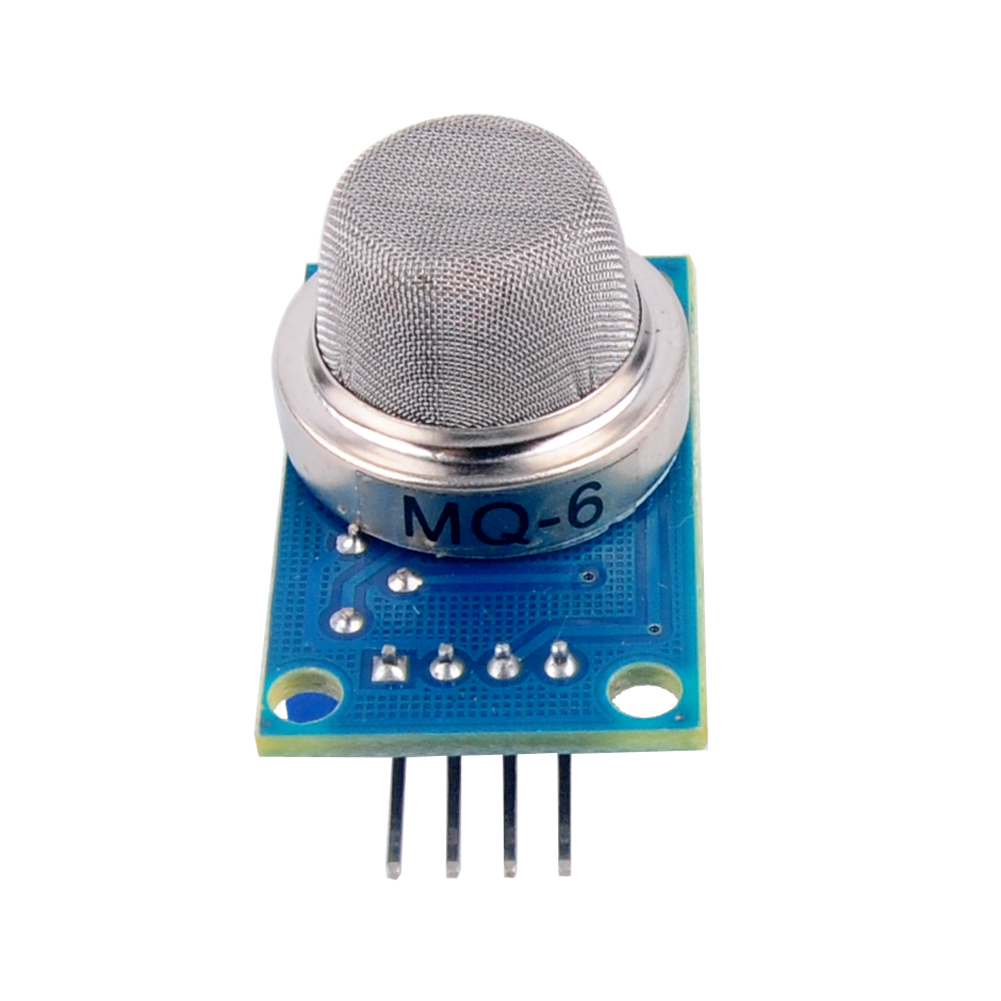
 Design with mq6 in Cirkit Designer
Design with mq6 in Cirkit DesignerIntroduction
The MQ-6 is a gas sensor designed to detect various gases, including LPG (liquefied petroleum gas), propane, and butane. Manufactured by ESP32, this sensor operates on the principle of resistive change when exposed to target gases. It provides an analog output proportional to the concentration of the detected gas, making it suitable for a wide range of gas detection applications.
Explore Projects Built with mq6
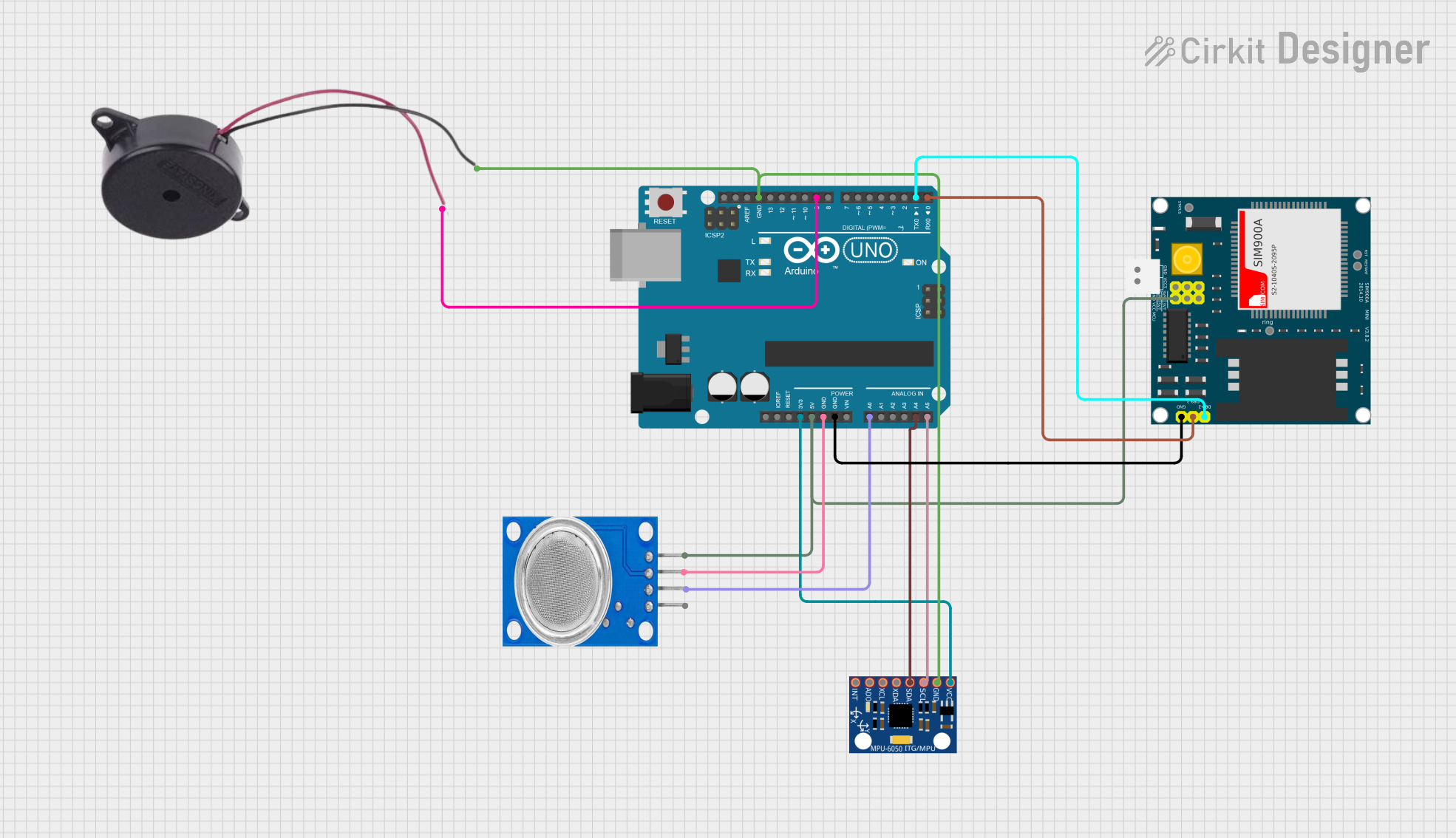
 Open Project in Cirkit Designer
Open Project in Cirkit Designer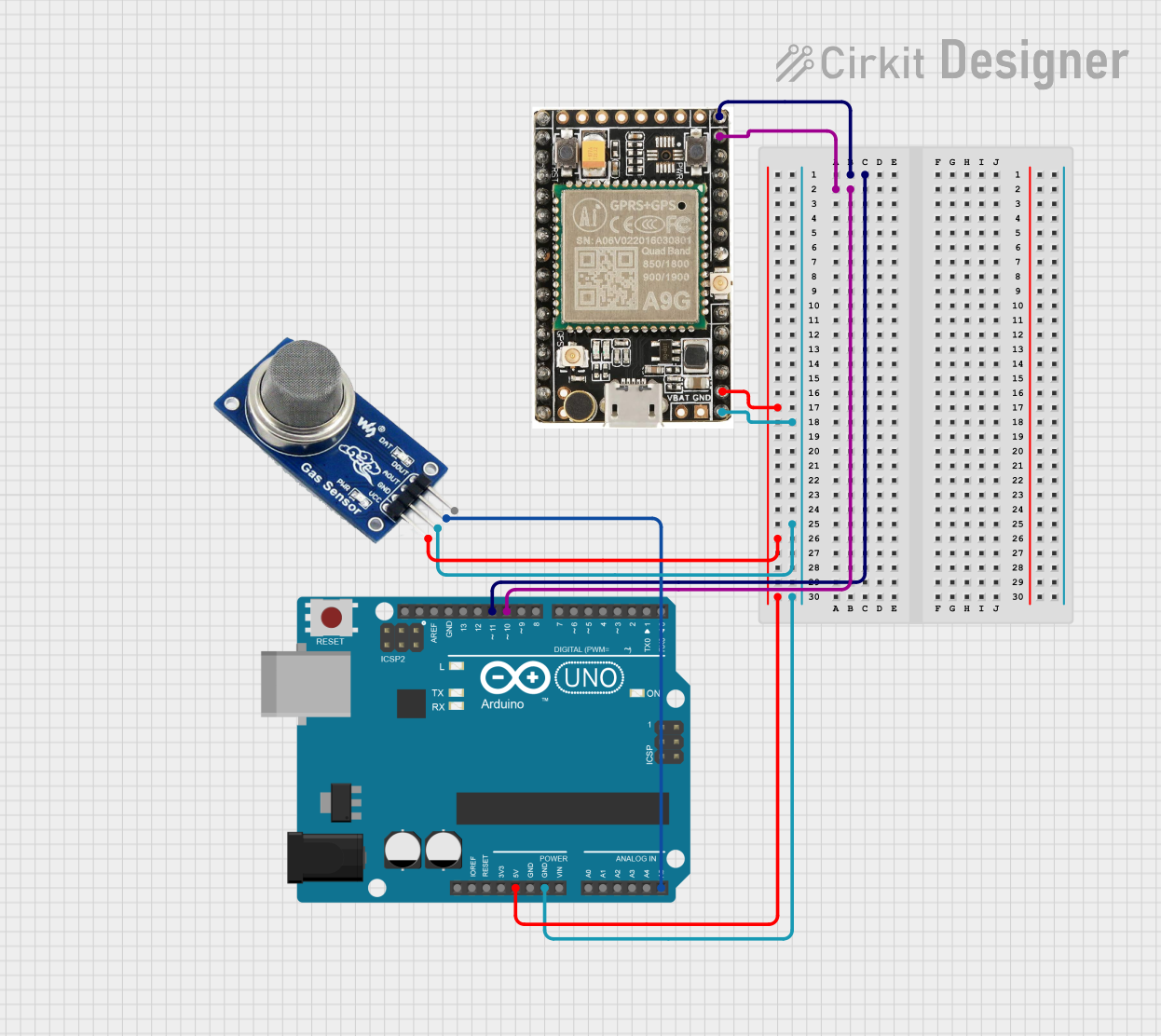
 Open Project in Cirkit Designer
Open Project in Cirkit Designer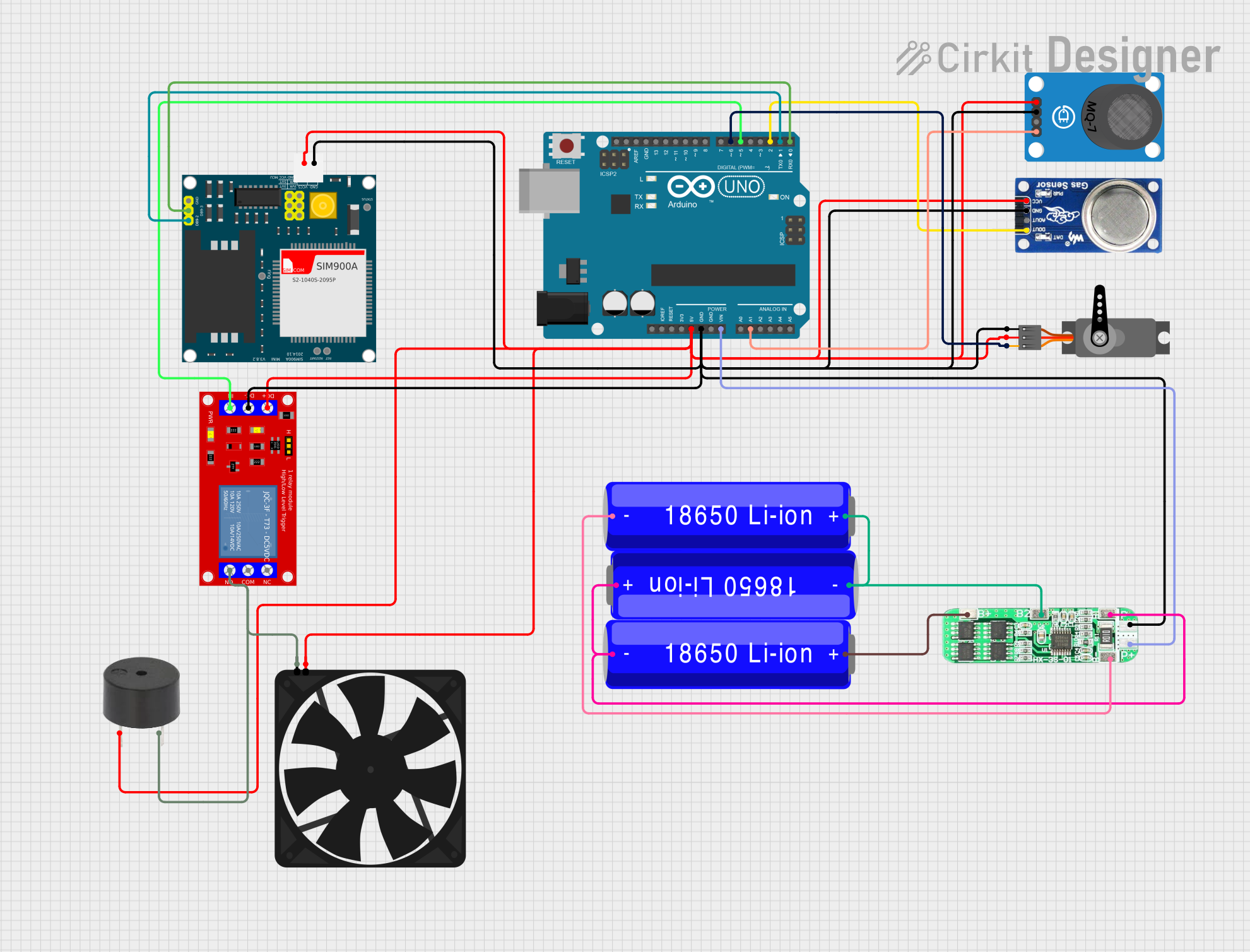
 Open Project in Cirkit Designer
Open Project in Cirkit Designer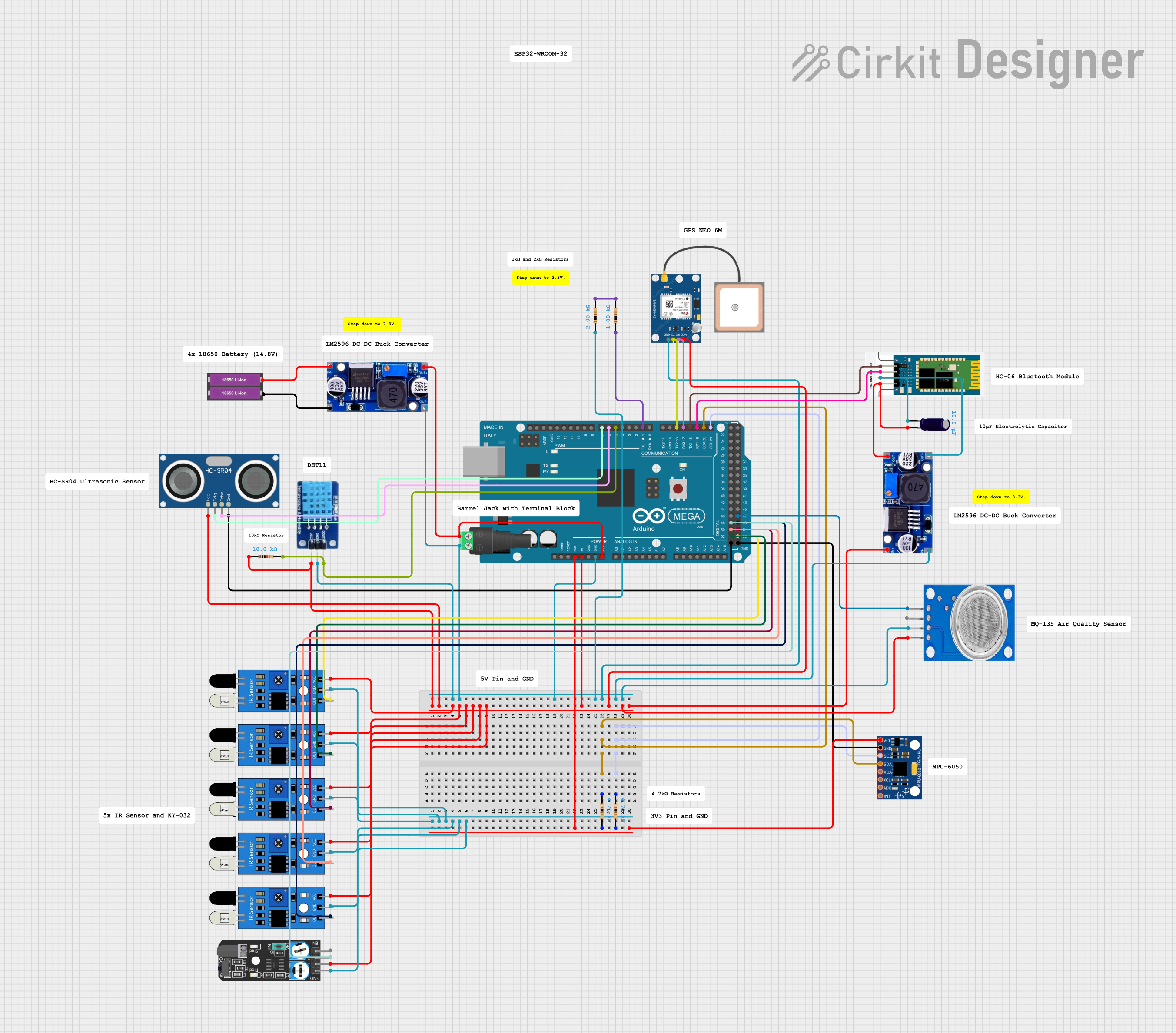
 Open Project in Cirkit Designer
Open Project in Cirkit DesignerExplore Projects Built with mq6

 Open Project in Cirkit Designer
Open Project in Cirkit Designer
 Open Project in Cirkit Designer
Open Project in Cirkit Designer
 Open Project in Cirkit Designer
Open Project in Cirkit Designer
 Open Project in Cirkit Designer
Open Project in Cirkit DesignerCommon Applications and Use Cases
- Gas leak detection in homes and industries
- Safety systems for detecting combustible gases
- Portable gas detectors
- Air quality monitoring systems
- IoT-based gas monitoring solutions
Technical Specifications
The MQ-6 sensor is a versatile and reliable component with the following key specifications:
| Parameter | Value |
|---|---|
| Operating Voltage | 5V DC |
| Load Resistance (RL) | Adjustable (typically 10 kΩ) |
| Heater Voltage (VH) | 5V ± 0.2V |
| Heater Power Consumption | ≤ 750 mW |
| Detection Range | 200 ppm to 10,000 ppm (LPG, propane, butane) |
| Preheating Time | ≥ 20 seconds |
| Output Signal | Analog voltage |
| Operating Temperature | -10°C to 50°C |
| Humidity Range | ≤ 95% RH |
| Dimensions | 32mm x 20mm x 22mm |
Pin Configuration and Descriptions
The MQ-6 sensor typically comes with four pins or six pins, depending on the module. Below is the pin configuration for a common MQ-6 module:
| Pin | Name | Description |
|---|---|---|
| 1 | VCC | Power supply pin (5V DC) |
| 2 | GND | Ground pin |
| 3 | AOUT | Analog output pin (provides gas concentration signal) |
| 4 | DOUT | Digital output pin (threshold-based signal) |
Note: Some modules may have additional pins for calibration or other features. Always refer to the specific module's datasheet for details.
Usage Instructions
How to Use the MQ-6 in a Circuit
- Power the Sensor: Connect the VCC pin to a 5V DC power supply and the GND pin to ground.
- Connect the Output:
- Use the AOUT pin to read the analog signal corresponding to the gas concentration.
- Optionally, use the DOUT pin for a digital signal if the module includes a comparator circuit.
- Preheat the Sensor: Allow the sensor to preheat for at least 20 seconds before taking measurements. This ensures accurate readings.
- Read the Output:
- For analog output, connect the AOUT pin to an ADC (Analog-to-Digital Converter) pin on a microcontroller (e.g., Arduino UNO).
- For digital output, connect the DOUT pin to a digital input pin on the microcontroller.
Important Considerations and Best Practices
- Calibration: The sensor may require calibration to ensure accurate gas concentration readings. Use a known gas concentration for calibration.
- Ventilation: Ensure proper ventilation around the sensor to avoid saturation and improve response time.
- Avoid Contaminants: Keep the sensor away from water, oil, and other contaminants that may damage the sensing element.
- Power Supply: Use a stable 5V power supply to avoid fluctuations in the sensor's output.
Example Code for Arduino UNO
Below is an example code snippet to interface the MQ-6 sensor with an Arduino UNO and read the analog output:
// Define the analog pin connected to the MQ-6 sensor
const int mq6Pin = A0;
void setup() {
Serial.begin(9600); // Initialize serial communication at 9600 baud
pinMode(mq6Pin, INPUT); // Set the MQ-6 pin as input
}
void loop() {
int sensorValue = analogRead(mq6Pin); // Read the analog value from the sensor
float voltage = sensorValue * (5.0 / 1023.0); // Convert to voltage (0-5V)
// Print the sensor value and voltage to the Serial Monitor
Serial.print("Sensor Value: ");
Serial.print(sensorValue);
Serial.print(" | Voltage: ");
Serial.println(voltage);
delay(1000); // Wait for 1 second before the next reading
}
Note: The analog output from the MQ-6 sensor is not directly proportional to the gas concentration. Use the sensor's datasheet to map the output voltage to the gas concentration.
Troubleshooting and FAQs
Common Issues and Solutions
No Output or Incorrect Readings:
- Cause: Insufficient preheating time.
- Solution: Allow the sensor to preheat for at least 20 seconds before taking measurements.
Fluctuating Readings:
- Cause: Unstable power supply or environmental noise.
- Solution: Use a stable 5V power supply and ensure proper grounding.
Sensor Not Responding to Gas:
- Cause: Sensor may be damaged or contaminated.
- Solution: Inspect the sensor for physical damage or contamination. Replace if necessary.
Digital Output Not Triggering:
- Cause: Incorrect threshold setting on the module.
- Solution: Adjust the potentiometer on the module to set the desired threshold.
FAQs
Q1: Can the MQ-6 detect gases other than LPG, propane, and butane?
A1: While the MQ-6 is optimized for LPG, propane, and butane, it may also respond to other combustible gases. However, its sensitivity and accuracy for other gases may vary.
Q2: How do I calibrate the MQ-6 sensor?
A2: Expose the sensor to a known concentration of the target gas and adjust the load resistance (RL) or module potentiometer to match the expected output.
Q3: Can I use the MQ-6 with a 3.3V microcontroller like ESP32?
A3: The MQ-6 requires a 5V power supply for the heater. However, you can use a voltage divider or level shifter to interface the analog output with a 3.3V microcontroller.
Q4: How long does the MQ-6 sensor last?
A4: The typical lifespan of the MQ-6 sensor is around 2-3 years under normal operating conditions.